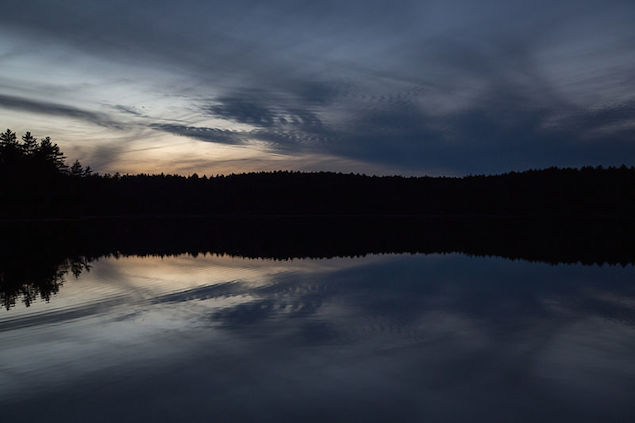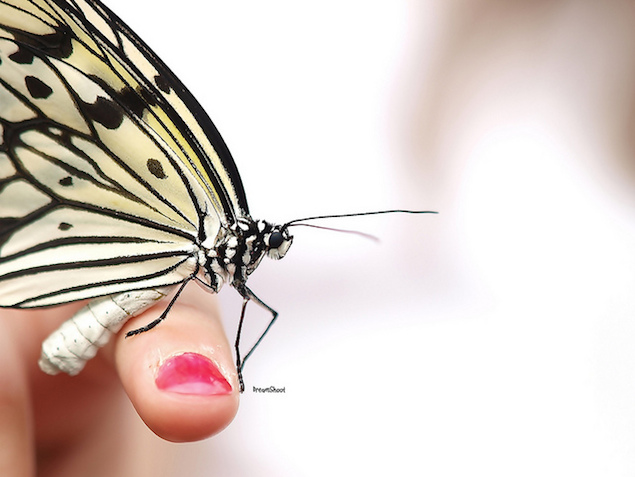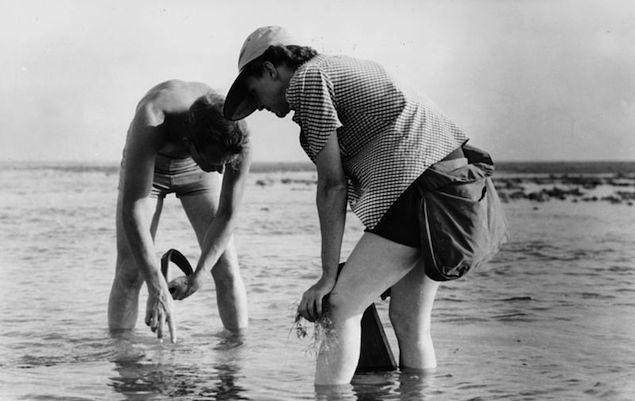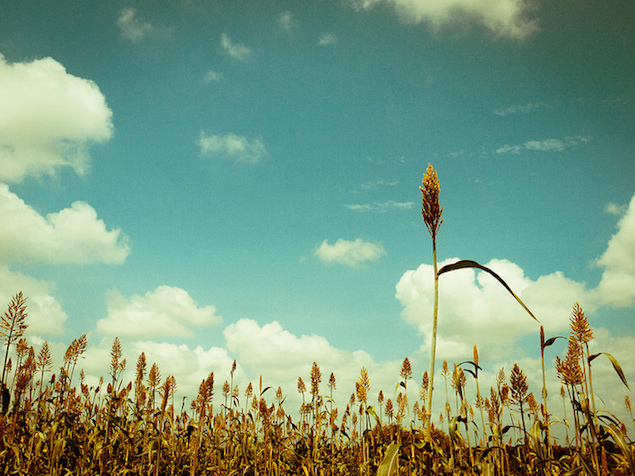Leisure • Sociology
Rachel Carson
There’s nothing very natural about caring for nature. The standard impulse has often been to conquer and tame the natural world: to clear the forest, hunt the animals, drain the marshes and extract whatever materials we can from the depths of the earth. For a very long time this seemed heroic and benign. Human efforts were on a puny scale in comparison with the apparently boundless abundance of the world. It’s only very recently that that we have become capable – collectively – of damaging the planet and exhausting some of its resources.
We learn to care for nature when someone is on hand to guide our emotions: to point out the beauty and intricacy of the butterfly, the awesome force and purity of the sea, the economy and grace of the oak tree…
In the most destructive and polluting country mankind has ever known, that person was – for a generation – Rachel Carson. A scientist and writer, almost single-handedly, Carson taught her fellow Americans to respect nature and recognise that they were in the process of destroying it at a faster rate than any previous civilisation – and would be in dire trouble if they did not alter their arrogant ways at the earliest opportunity.
At first glance, Carson’s work seems to be a simple and urgent warning against the dangers of new agricultural technologies (especially noxious chemicals), but her writing is far from being a dry polemic against environmental degradation. Carson understood – like too few environmentalists before and after – that in order for her cause to gain traction in a democratic consumer society, she had to charm her audience into loving nature. It wasn’t enough to make them feel guilty about what their consumerism and greed were doing to the world; what she had to do was to make them fall in love with the seas, the forests and the prairies in order that they would stand any chance of wanting to alter their ways.
At the very end of her life, Carson wrote a book specifically for children, beautifully illustrated with photographs of nature. She called it The Sense of Wonder, and tried to guide parents to teach their children to feel close to the earth and its miraculous creations from the earliest age:
‘A child’s world is fresh and new and beautiful, full of wonder and excitement. It is our misfortune that for most of us that clear-eyed vision, that true instinct for what is beautiful and awe-inspiring, is dimmed and even lost before we reach adulthood. If I had influence with the good fairy who is supposed to preside over the christening of all children I should ask that her gift to each child in the world be a sense of wonder so indestructible that it would last throughout life, as an unfailing antidote against the boredom and disenchantments of later years, the sterile preoccupation with things that are artificial, the alienation from the sources of our strength.’
Rachel Louise Carson (1907-1964) was born and raised on a small family farm in Pennsylvania, where she learned to love animals and nature from her earliest years. In a time when it was unusual for women to have further education, she went to Chatham University and studied a distinctive mixture of English and Biology. She then began a PhD at Johns Hopkins University, where, after some frustrating and fruitless studies involving pit vipers and squirrels, she finally published a Master’s dissertation on the excretory systems of fish. However, she had to leave this topic (and higher education altogether) in order to support her struggling family – after first her father, then her sister, and finally her niece all died tragically young in quick succession.
This was at the time of the Great Depression, when many United States government agencies were creating new jobs – some of them quite peculiar – to shorten unemployment lines. By chance, Carson secured a job writing radio broadcasts for the U.S. Bureau of Fisheries. The series was called “Romance under the Waters” and was designed to educate Americans about marine biology and the importance of the work of the bureau itself. Carson soon discovered an exceptional knack for making the lives of aquatic animals sound interesting to the general public. She wrote about eels, whelks and crabs, about the Atlantic stargazer, the gulf pipefish and the Remo flounder – and gripped her audiences. “If there is poetry in my book about the sea, it is not because I deliberately put it there,’ she wrote modestly, ‘but because no one could write truthfully about the sea and leave out the poetry.”
But poetry there certainly was – and it was her genius to know how to express it:
“Who has known the ocean? Neither you nor I, with our earth-bound senses, know the foam and surge of the tide that beats over the crab hiding under the seaweed of his tide pool home; or the lilt of the long, slow swells of mid-ocean, where shoals of wandering fish prey and are preyed upon, and the dolphin breaks the waves to breathe the upper atmosphere. Nor can we know the vicissitudes of life on the ocean floor […] where swarms of diminutive fish twinkle through the dusk like a silver rain of meteors, and eels lie in wait among the rocks. Even less is it given to man to descend those six incomprehensible miles into the recesses of the abyss, where reign utter silence and unvarying cold and eternal night.”
Eventually, Carson wrote three books about the sea. One was a particularly poetic meditation (Under the Sea Wind, 1941); a second (The Sea Around Us, 1951) looked at the migratory and seasonal patterns of sea creatures; another focused on coastal ecosystems and their resilience and importance (The Edge of the Sea, 1955). She had a talent for encouraging readers to abandon their normal myopic human points of view so as to learn to consider existence from the perspective of a painted goby or an ocean pout. She understood that scientific facts would never be enough to stir a population distracted by commercial television and demanding jobs, that she needed the gifts of a great writer to help to save the planet.
She wanted to promote identification with the whole of the earth: so that humans would learn to consider themselves a part of something unfathomable, beautiful and fragile, rather than merely the appointed masters and destroyers of ‘resources’. Her gifts reached their climax in her most subtle, impassioned and moving book, Silent Spring (1962).
The book’s main topic was – from a distance – rather unpromising: pesticides. Yet this was a book that would sell 20 million copies and change the course of history.
In the late 1950s, the United States Federal Government had begun mass-producing chemical pesticides developed in military-funded laboratories. The most popular was dichlorodiphenlytrichloroethane (DDT), originally designed to rid Pacific islands of malaria-carrying bugs during the Second World War. DDT was so effective and apparently so beneficial that its inventor, Paul Hermann Müller, was awarded a Nobel prize.
However, DDT turned out to be a Frankenstein-ian invention. It gradually emerged that it killed not only malaria-bearing insects, but also for months afterwards, any kind of insect whatsoever. Moreover, DDT ran off with rainwater, drained into streams and aquifers and poisoned fish, moles, rats, foxes, rabbits and pretty much anything else alive. Applications of DDT had the power to contaminate the world’s food supply, as well as collect in carcinogenic ways in the fatty tissues of humans.
The book caused outrage. Although Carson was an established author, magazines and newspapers shunned her arguments. Scientists who had helped develop DDT and the companies they worked for angrily disputed the dangers of the pesticide. Companies like Monsanto published polemics against the work and launched snide rumours about its author. The executive of one company raged, “If man were to faithfully follow the teachings of Miss Carson, we would return to the Dark Ages, and the insects and diseases and vermin would once again inherit the earth.” Ezra Taft Benson, the U.S. Secretary of Agriculture, wrote to President Eisenhower that, since Carson was physically attractive yet unmarried, she was “probably a communist.” (In fact, she may simply have been too busy writing scientific texts, or – possibly – had a romantic friendship with a close female friend).
Despite the efforts of corporations and their political allies, Silent Spring broke through. Expecting criticism from the chemical industry, Carson had prepared the book as though it were a lawsuit, and included 55 pages of notes at the end to prove her points. Her arguments were bullet-proof.
The title, Silent Spring, provided a terrifying image of a world without songbirds, or almost any kind of natural life whatsoever. It opened with a depiction of a nameless small American town, full of consumer conveniences, slick gadgets and cheap food outlets, but without robins or ladybirds, larks or squirrels. A world ostensibly altered for the convenience of human beings would end up being no world for humans at all.
Carson urged us to leave nature alone: when abandoned to its own devices, nature would itself fight against insect over-population. But if man intercepted, unwanted populations would eventually become resistant to all poisons and then balloon rapidly, because the insects that kept pests in check would unwittingly also have been killed.
Carson concluded that scientists (and modern human beings generally) are philosophically naive enough to assume that nature is a force to be controlled at will, rather than a fierce, complex and vast entity that responds unpredictably to any human action. She suggested that human beings should think more creatively about how to prevent insect damage, for example, by sterilising insects, or using the same chemical “lures” insects use to catch each other, or by using sound at a specific frequency to destroy larvae. Turning towards the larger issue of humans and their environment, she then reminded readers that dealing with nature would always require an appreciation, respect, and awe of nature, and an understanding that that it is a force largely beyond human control and full comprehension.
With her lyrical style of writing, her defence of the primitive and her love of nature, Carson was – for a scientific age – an heir to David Henry Thoreau. Like Thoreau, Carson’s work was guided by a sense of responsibility towards the earth, the seas and the skies. Like Thoreau, Carson saw them as sources of psychological health and wisdom. By learning to live more closely attuned to their cycles, to their subtle processes, and to their very simplicity, humans would have access to a nourishing wisdom and an inoculation against the psychological ills of modern life.

Carson died from breast cancer shortly after the publication of Silent Spring, yet her work has endured. The book quickly became a critical influence on the nascent environmental movement. Not only was DDT strictly controlled and eventually banned (both in the US and abroad), Carson’s views on nature became part of our common consciousness. We are, thanks in large part to her, now able to think of ourselves as part of a larger ecosystem that is sharply imperilled by our activities and needs to be treated with the utmost humility and care.
Carson revealed that what might have seemed like an arcane technical matter (getting rid of pests in midwestern corn fields) was ultimately a metaphysical and moral issue. At heart, good stewardship of the earth requires us to understand both our scientific strength and our distinctive moral stupidity and imaginative blindness.
In her posthumously published book for children, The Sense of Wonder, Carson shook off the mantle of the scientist to speak to us in the plainest, most moving terms about how to love the small blue mothership that sustains us:
“One stormy autumn night when my nephew Roger was about twenty months old I wrapped him in a blanket and carried him down to the beach in the rainy darkness. Out there, just at the eve of where-we-couldn’t-see, big waves were thundering in, dimly seen white shapes that boomed and shouted and threw great handfuls of froth at us. Together we laughed for pure joy—he a baby meeting for the first time the wild tumult of Oceanus, I with the salt of half a lifetime of sea love in me. But I think we felt the same spine-tingling response to the vast, roaring ocean and the wild night around us.”
Winslow Homer, Moonlight, 1874
It is perhaps her most radical idea of all: that it is love, rather than guilt, which is the key to transforming humanity’s relationship to nature.

































